Sugo di pomodoro is an Italian tomato sauce made from fresh or canned tomatoes, cooked slowly with garlic, olive oil, and fresh basil. The result is a rich, flavorful sauce that can be chunky or smooth, depending on how it’s prepared. Sugo di pomodoro together with salsa Besciamella are the two cornerstone sauces in Italian cuisine.
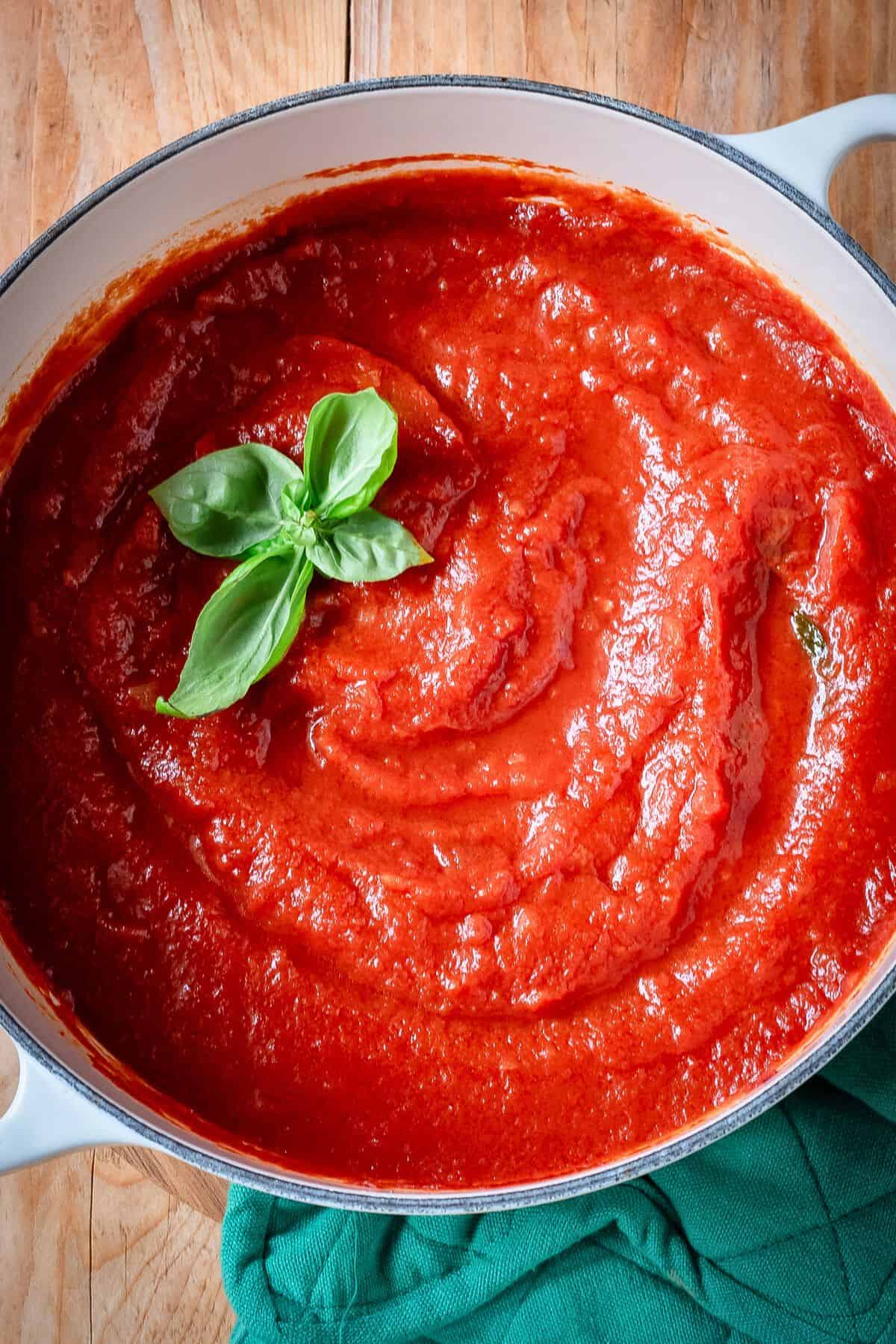
Sugo di pomodoro or also known as salsa di pomodoro is typically used to season pasta, gnocchi, cook meatballs in, to use between the layers in eggplant Parmigiana but also as a base sauce you can enrich with a few add-ons likes capers and olives to make Pasta Alla Puttanesca.

Table Of Contents
Ingredients

- Tomato Passsata - pureed tomatoes or also known as sieved/strained tomatoes. They are usually sold in glass jars or carton boxes. Read the label, the only ingredients should be tomatoes and salt, nothing else.You can also use diced or whole canned tomatoes including San Marzano tomatoes or a mix of passata and canned tomatoes for a more rustic texture.
- Garlic, Onion - it's possible to use either garlic or onion, or both.
- Garlic is best to use whole cloves crushed with a flat knife, heat them in oil until fragrant then remove. This will give your tomato sauce that pleasant garlic flavor without garlic breath.
- A tablespoon of finely chopped onion (I prefer shallot) is more than enough to give flavor without overpowering. Remember, it’s sugo di pomodoro which means tomatoes should be the protagonists.
- Herbs - fresh basil is always the best. If it's not available you can substitute it with frozen basil or with dried oregano.
- Extra Virgin Olive Oil (EVO Oil) - helps extract flavor and aroma from garlic, onion and basil but also gives its very own flavor to the sauce.
- Salt to taste.
Variations & Possible Add-Ons
- Use either garlic or onion. I like to use both.
- Just like with garlic, you can add whole onion instead of finely chopped, then remove it after the sauce is cooked.
- Add peperoncino - hot pepper flakes. Even if you don’t like heat adding just a pinch will give your sugo di pomodoro that undetectable extra flavor everyone loves.
- Substitute butter for extra virgin olive oil - this is more common for Nothern regions of Italy where traditionally butter was in abundance. This is also what Marcella Hazan uses in her tomato sauce saying that butter gives the sauce the right creaminess and sweetness.
How To Make Step By Step With Pictures
See the recipe card for full information on ingredients and quantities.

- In a large pan or casserole pot add extra virgin olive oil, garlic crushed with a flat knife, finely chopped onion, and basil (set 2-3 leaves aside). Set the heat to medium low.

- Slowly fry until garlic becomes fragrant and onion becomes translucent. Pay attention not to burn it. Remove the garlic.
THE WHY BEHIND IT: When using fresh basil I like to add most of it in the beginning and reserve a coupe of leaves for the end. This is a trick I learned from a Neapolitan chef. Adding basil in oil in the beginning helps infuse olive oil with intense basil aroma. Adding a few torn leaves at the end gives another fresh kick of flavor just before the sauce is ready.
If using dry herbs such as oregano, add them close to the end of cooking.
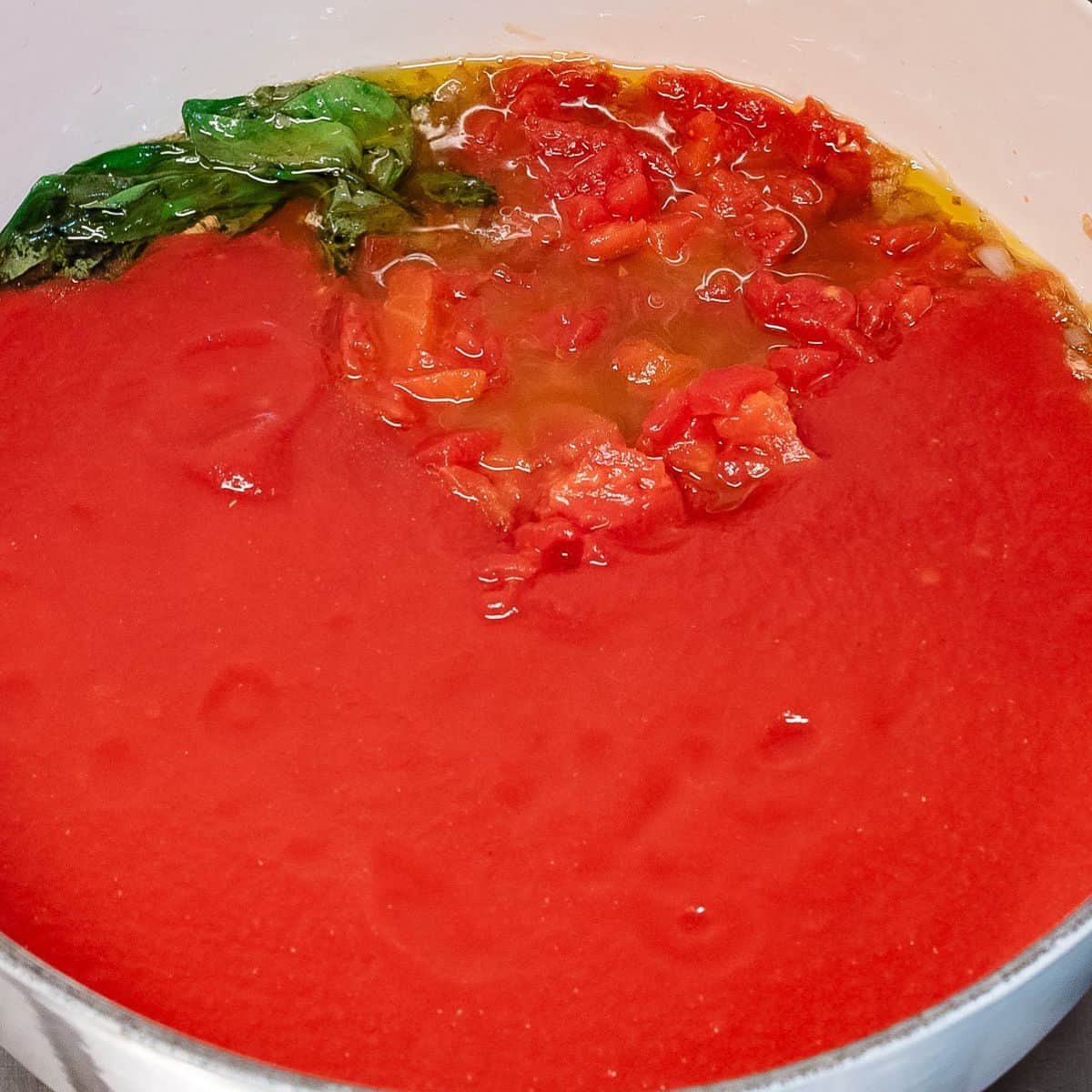
- Add tomato passata and/or canned tomatoes. I like to use a mix of both when I want a chunky rustic texture.
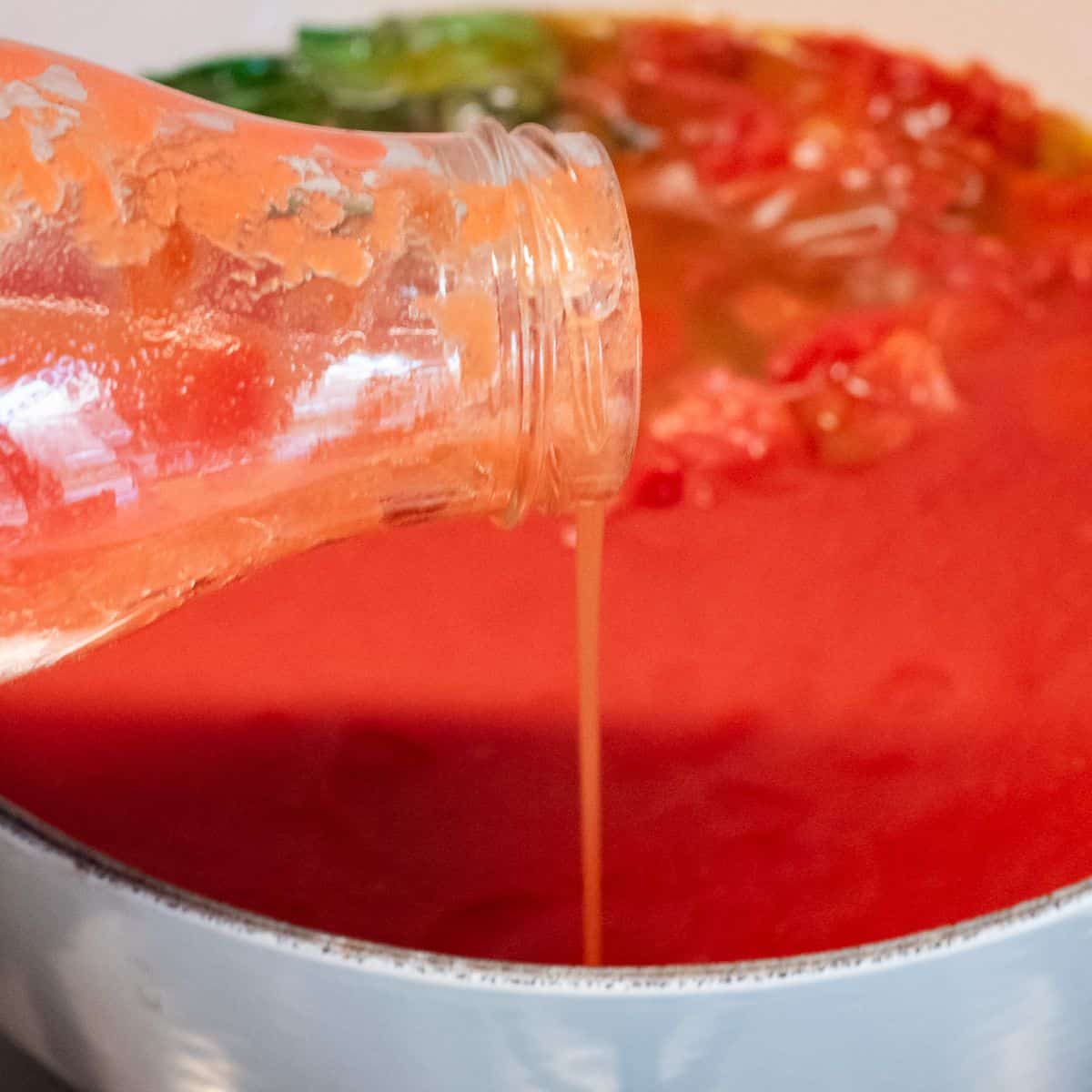
- Add a little water in the jar/can and rinse out any remaining tomatoes to the pot with the sauce.
EXTRA TIP: When using canned tomatoes break them down either before cooking (by squishing between your fingers) or as they're cooking in the pan (use either a potato masher or simply bread them down with a wooden spoon).
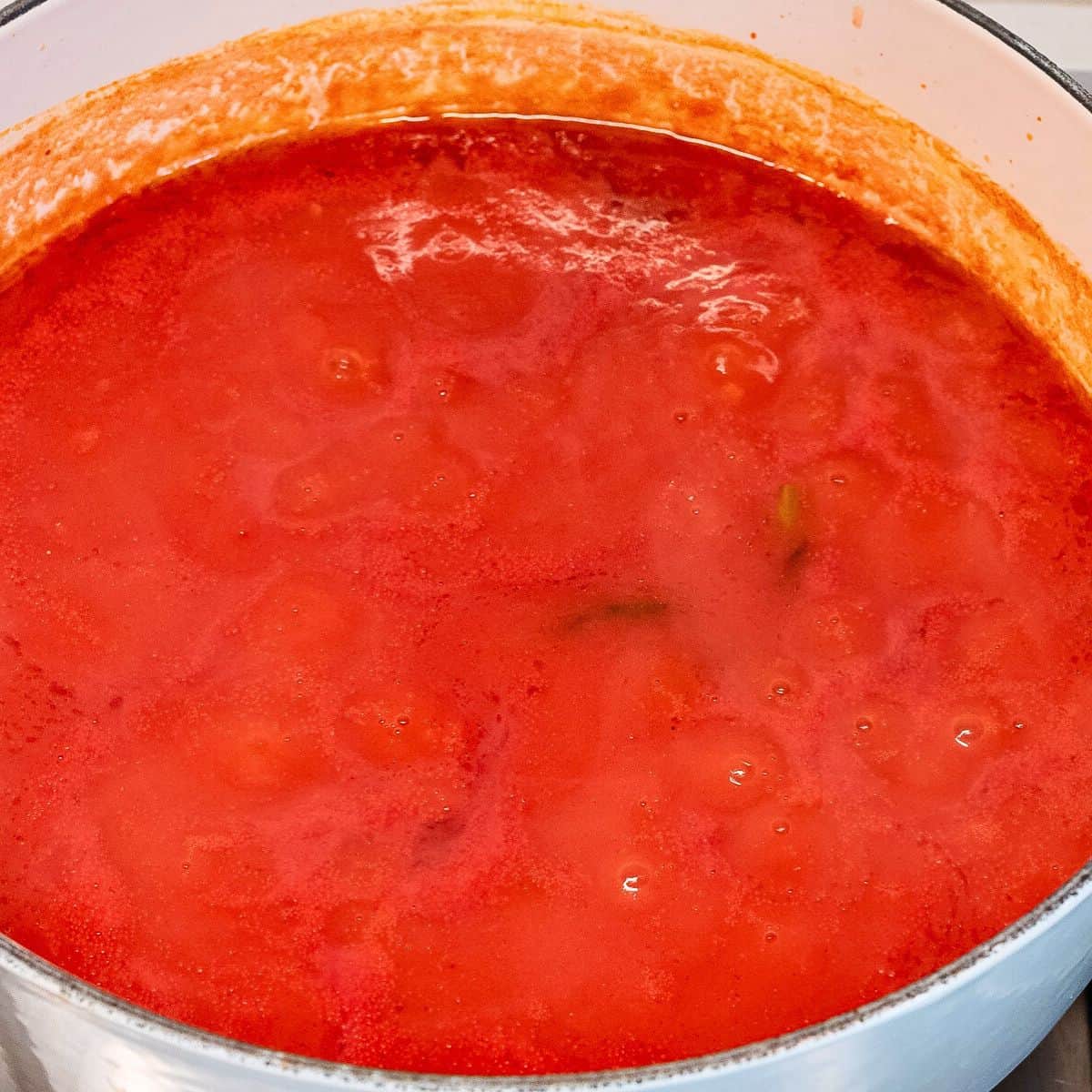
- Simmer on low heat for 30-45 minutes covered with a lid leaving a small opening. Check on the sauce occasionally and add a little more water if the sauce starts to dry out.
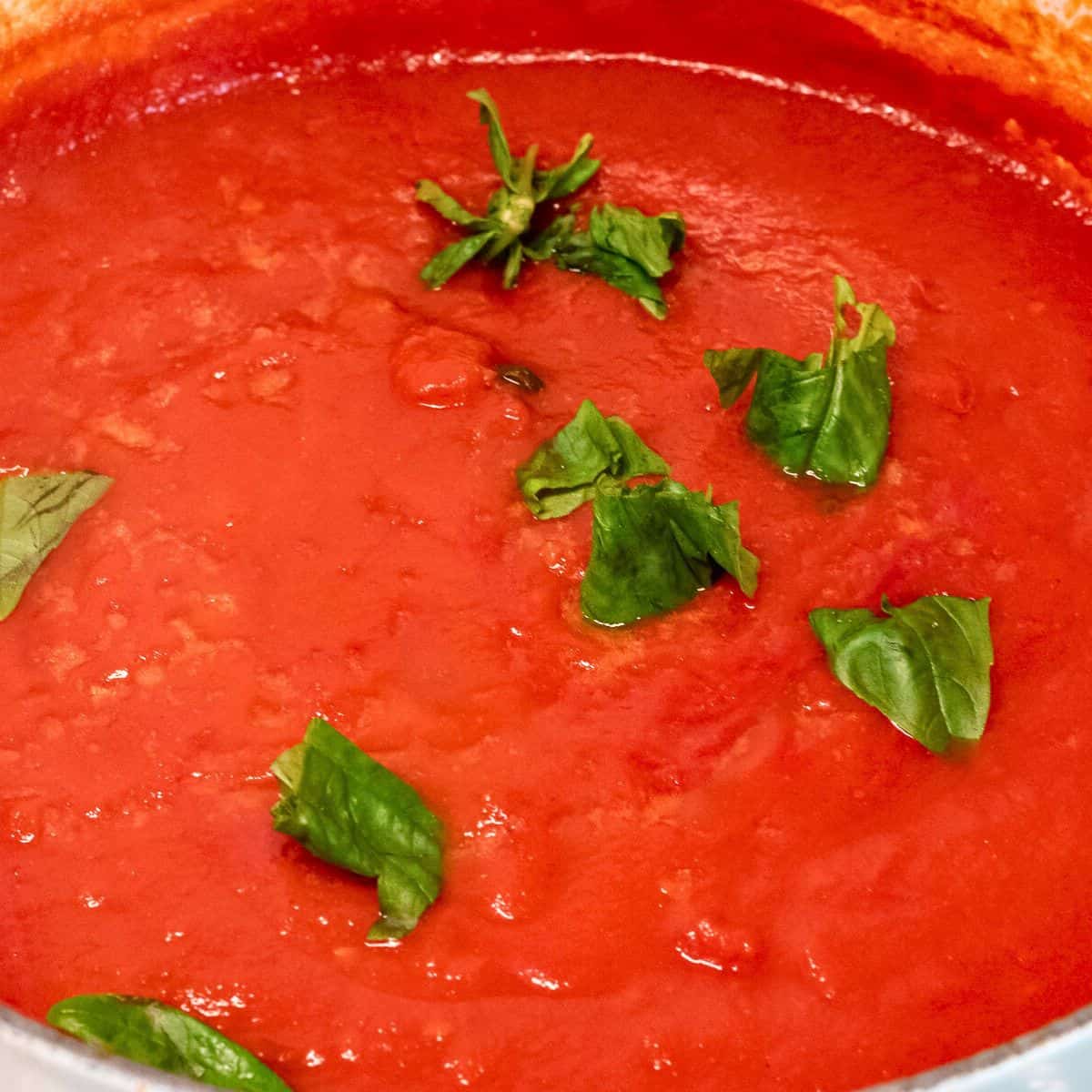
- At the end of cooking, add salt to taste and remaining basil leaves torn into small pieces.
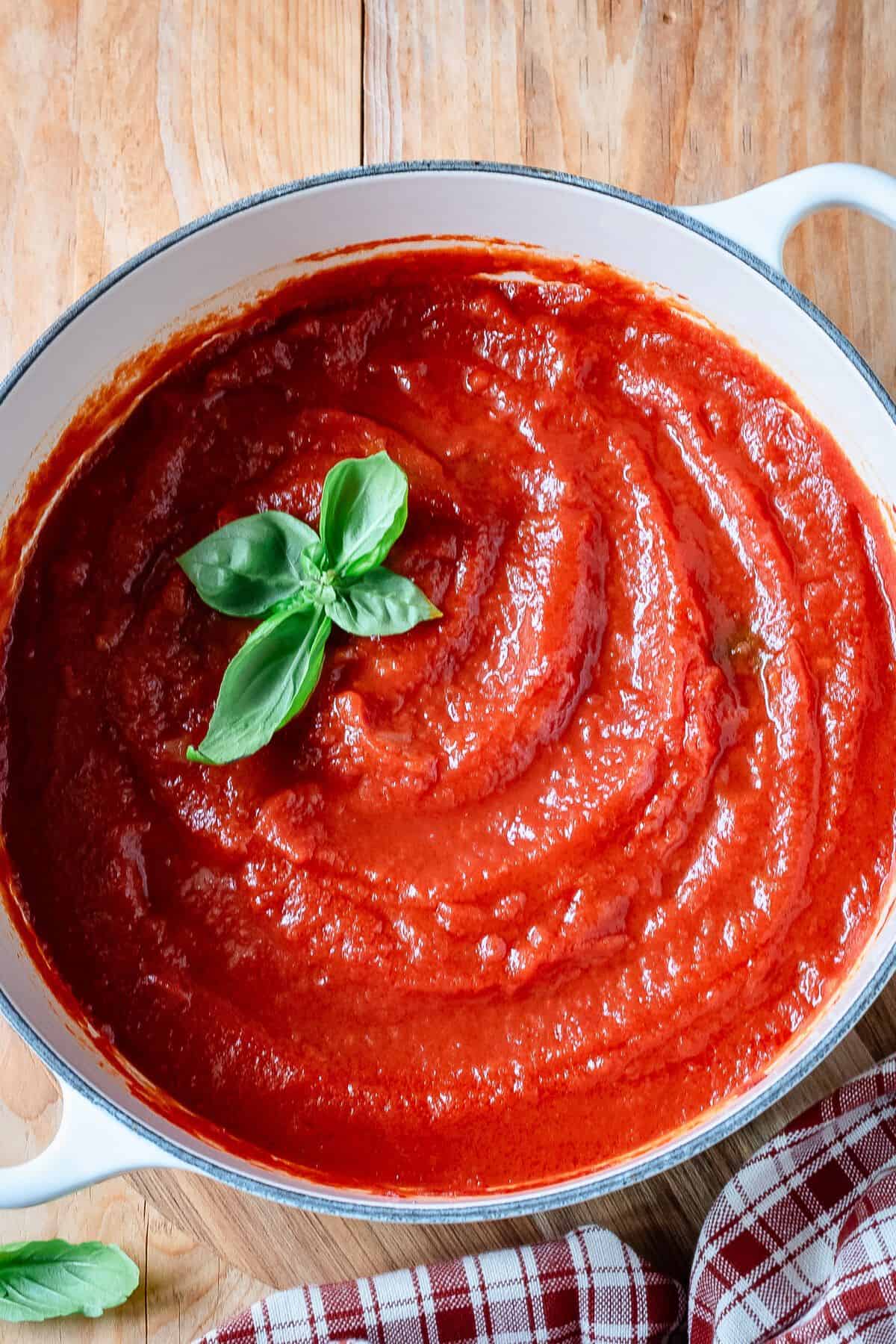
How To Make Passata With Canned Tomatoes
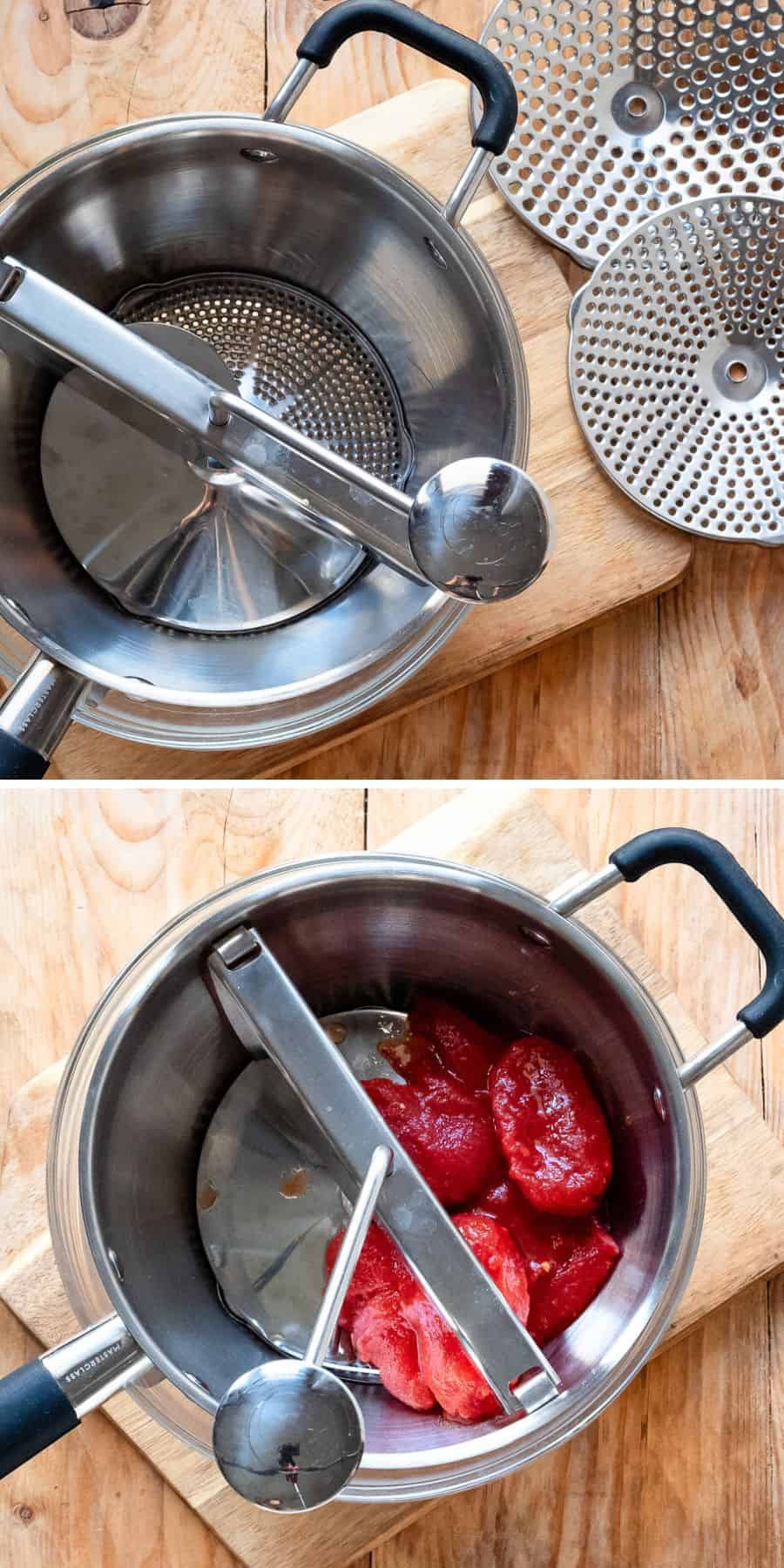
Using a simple food mill you can easily turn canned tomatoes into tomato passata or tomato puree.
By selecting different grinding disks you can make fine, medium or rustic passata.
Why not blitz everything with a blender or food processor you'd ask?
In short, it alternates taste, texture and color of the sauce. Food processor with blend not only the pulp but also the seeds which will make passata bitter. Plus it will incorporate too much air making tomato pure lighter in color and foamy.
What if my tomato sauce is too acid?
First of all, don't judge the acidity of your tomato sauce when you just start cooking it. Long cooking time will noticeably reduce the acidity.
If by the end of cooking time your sugo still tastes too acid, here's what you can do.
- Add a few pinches of sugar. This will create a pleasant balance of acidic and sweet that tomato sauce is loved for in the first place.
- Add tomato paste. A tablespoon or so should be enough. This is my favorite method. Tomato paste or tomato concentrate adds sweetness and richness with natural tomato flavor.
- Add a smidgen of baking soda. Baking soda will neutralize the acidity actually raising the pH level. The problem is, you do want some acidic flavor in your tomato sauce as it's one of its signature characteristics so only use baking soda if you were not able to fix the flavor a few pinches of sugar.
- Acidity of tomato sauce will highly depend on the quality of tomatoes/ brand you use. High quality passata/canned tomatoes will rarely require any adjustments. But if you know in advance that your sauce will need the adjustment, add a carrot cut in large chunks to the sauce white it's cooking then remove at the end.
Top Tips For Success
- Read the label. Whether using passata di pomodoro or canned tomatoes make sure only ingredients on the label are tomatoes and salt, even though salt is not always included.
- Use high quality passata/canned tomatoes. They are usually less acidic and less watery. I love this passata that comes in 26 oz (750 g) carton boxes or its smaller size 14 oz (390g) version. Other good Italian brands are Mutti and Cirio.
- Cook slow and low. Cooking sugo di pomodoro for at least 30 minutes of low heat is essential to bring up that sweet, pleasantly acidic flavor of the tomatoes.
- Salt at the end. You might be tempted to add salt in the beginning but don't. During cooking tomato sauce will reduce and you risk to have over-salted it.
- Take samples. If you want to see-taste how your tomato sauce transforms during cooking do this: set aside a teaspoon or so as you've just started cooking the sauce, then set another teaspoon after 15 minutes of cooking, one more after 30 minutes of cooking, another teaspoon after adding salt at the end and ultimately after correcting the acidity if needed (see notes above). You'll be surprised to discover how the flavor of tomato sauce transforms with each step.
Salsa or Sugo?
Shall we get into the weeds? I promise, I'll make as simple as possible.
There are 3 different stages of tomato sauce:
- Passata di pomodoro - tomatoes are sieved, briefly heated (not cooked) and bottled (optional). No extra ingredients added except possibly for salt.
- Salsa di pomodoro - uses oil and garlic (onion) soffritto as a base to which passata di pomodoro is added. It's slowly cooked until into more or less thick tomato sauce.
- Sugo di pomodoro - is the next of salsa di pomodoro to which you'll add other ingredients (not necessarily in the same order) depending on the dish you're making. For example you'll add fried eggplants to make Sugo Alla Norma, you'll add chicken and mozzarella cheese to make Chicken Sorrentino, you'll add ground meat to make Sugo di Carne, or capers, olive and anchovies to make Sugo Alla Puttanesca for pasta.
So, technically this recipe should be called salsa di pomodoro (given the basic ingredients) but in reality most Italians will still call it sugo di pomodoro. I know, Italy is a complicated country 🙂
FAQ
You can store sugo di pomodoro in an airtight container in the fridge for up to 4 days.
Absolutely! Divide into portions and freeze for up to 3 months.
Absolutely! In this case you'll need to prepare fresh tomatoes first. Cut a cross on the bottom of each tomato, boil for 1-2 minutes then transfer to a bowl with ice water. Peel off the skin, cut each tomato in quarters, remove core and the seeds and thinly cut into strips or cubes. Now tomatoes are ready to be added to the pot with garlic and olive oil and cooked according to the recipe.
Yes! In fact, I highly recommend you try it at least once. All you need to do is cut tomatoes into cubes. Cherry tomatoes have thin skin and few seeds, so there's no need to blanche to remove the skin and the seeds.
Recipes Using Sugo Di Pomodoro
Full Recipe

Sugo di Pomodoro (Italian Tomato Sauce)
Ingredients
- 2 ½ cups tomato passata , or 3 14-oz cans of peeled tomatoes or a mix of both, see NOTE 1
- ¼ cup water
- 2 cloves garlic , see NOTE 2
- 1 tablespoon onion or shallot , finely chopped
- 3-4 tablespoon extra virgin olive oil
- Fresh basil
- Salt to taste
Instructions
- In a large pan or casserole pot add extra virgin olive oil, garlic crushed with a flat knife, finely chopped onion, and basil (set 2-3 leaves aside). Set the heat to medium low.
- Saute until garlic becomes fragrant and onion becomes translucent. Pay attention not to burn it. Remove the garlic.
- Add tomato passata and/or canned tomatoes. I like to use a mix of both when I want a chunky rustic texture.
- Add a little water in the jar/can and rinse out any remaining tomatoes to the pot with the sauce.
- Simmer on low heat for 30-40 minutes covered with a lid leaving a small opening. Check on the sauce occasionally and add a little more water if the sauce starts to dry out.If using canned tomatoes, crush them with a wooden spoon or potato masher.
- At the end of cooking, add salt to taste and remaining basil leaves torn into small pieces.
Notes
-
- Read the label. Whether using passata di pomodoro or canned tomatoes make sure only ingredients on the label are tomatoes and salt, even though salt is not necessary.
-
- Use high quality passata/canned tomatoes. They are usually less acidic and less watery. I love this passata that comes in 26 oz (750 g) carton boxes or its smaller size 14 oz (390g) version. Other good Italian brands are Mutti and Cirio.
-
- Cook slow and low. Cooking sugo di pomodoro for at least 30 minutes of low heat is essential to bring up that sweet, pleasantly acidic flavor of the tomatoes.
-
- Salt at the end. You might be tempted to add salt in the beginning but don't. During cooking tomato sauce will reduce and you risk to have over-salted it.
Nutrition
Nutrition information is automatically calculated, so should only be used as an approximation.

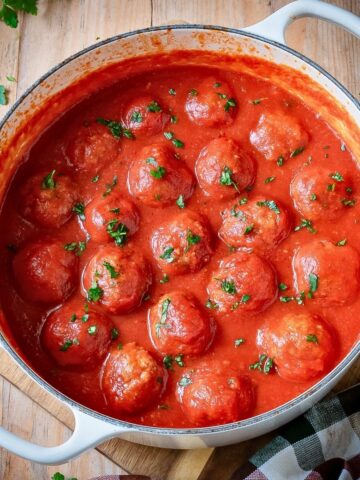




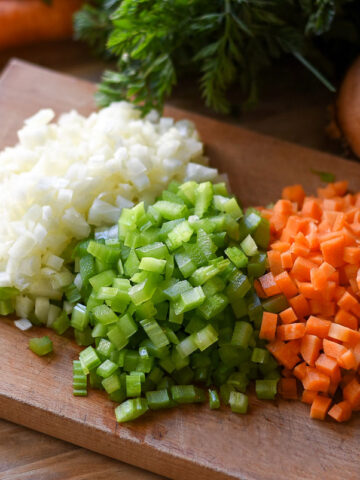


Heather says
Why do you take the garlic out? And do you ever add it back in?
Svitlana says
The reason we take the garlic out is because it has given all its aroma and flavor to the oil where we sauteed it, so technically we don't need it any more.
If you forget to take it out, not a big problem, we do it mainly to avoid that someone finds a large chunk of garlic in one bite.